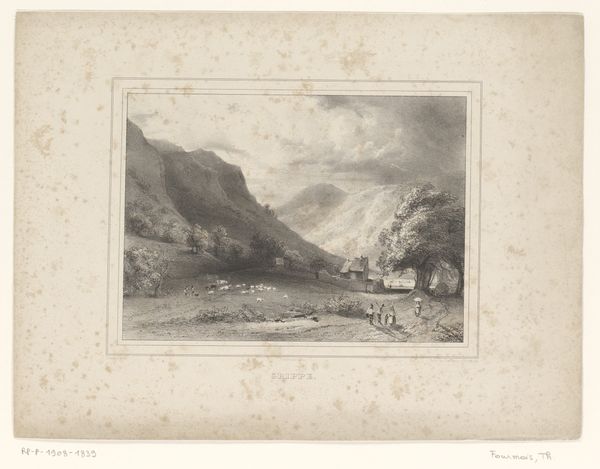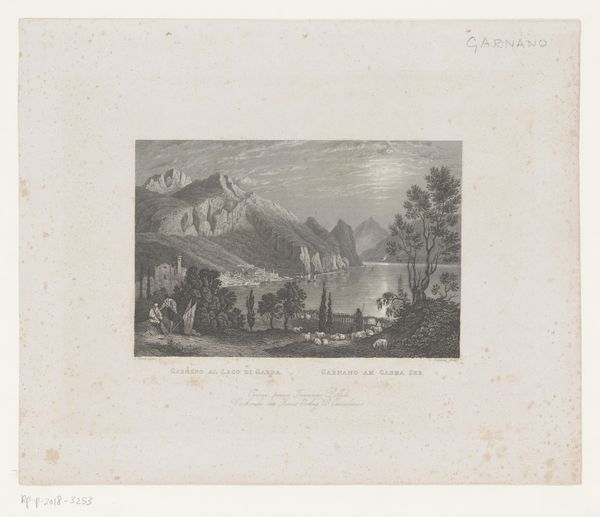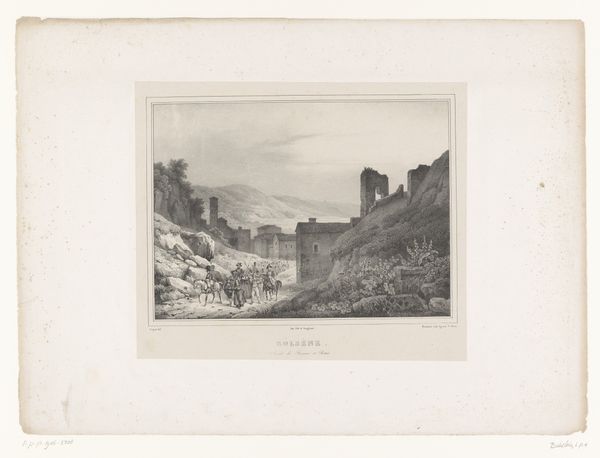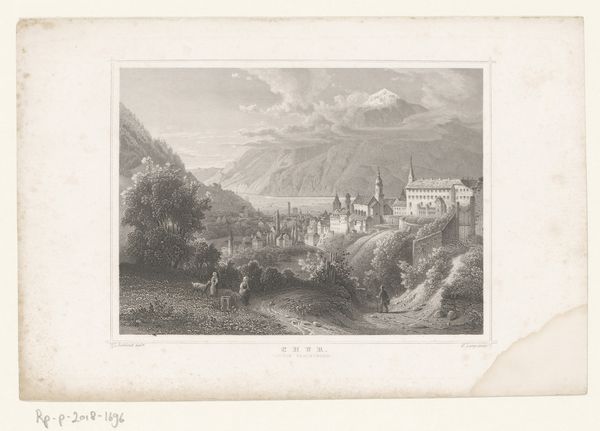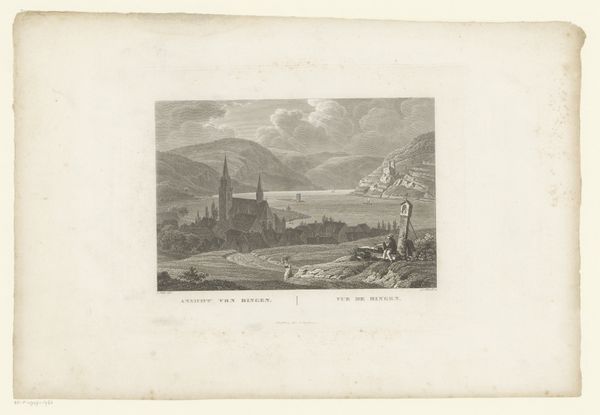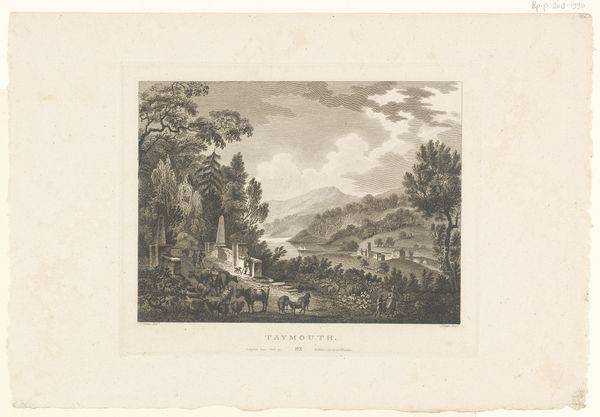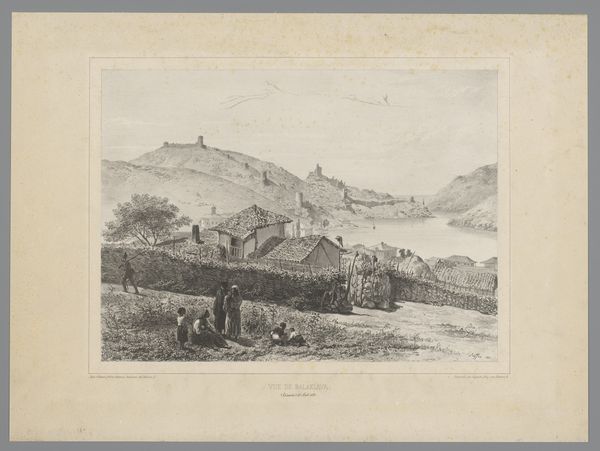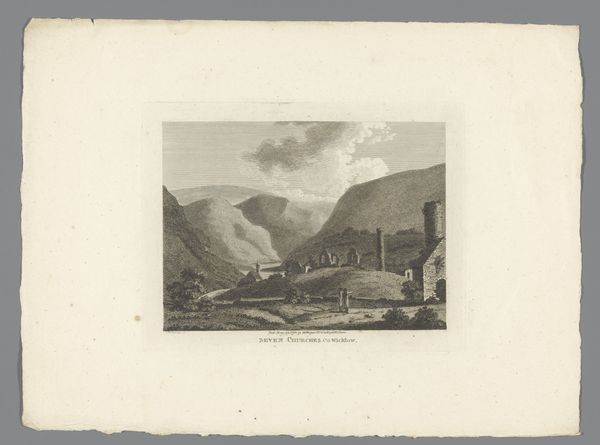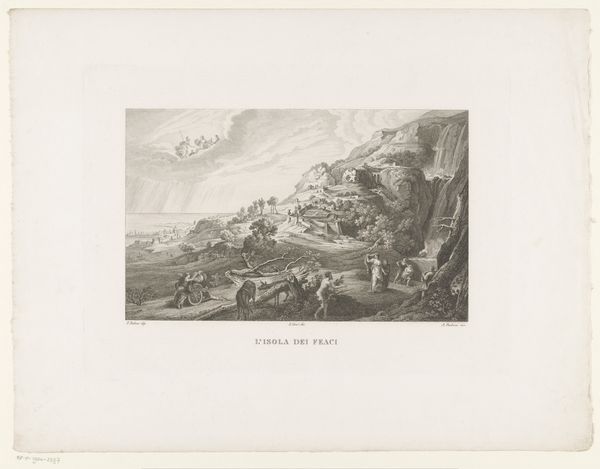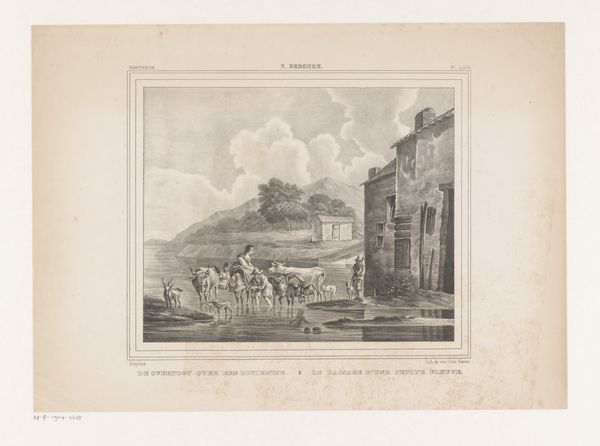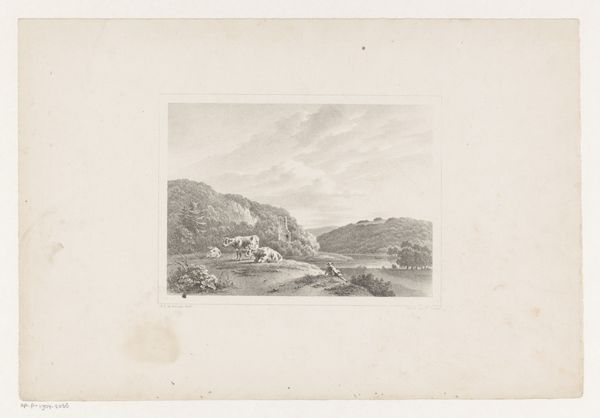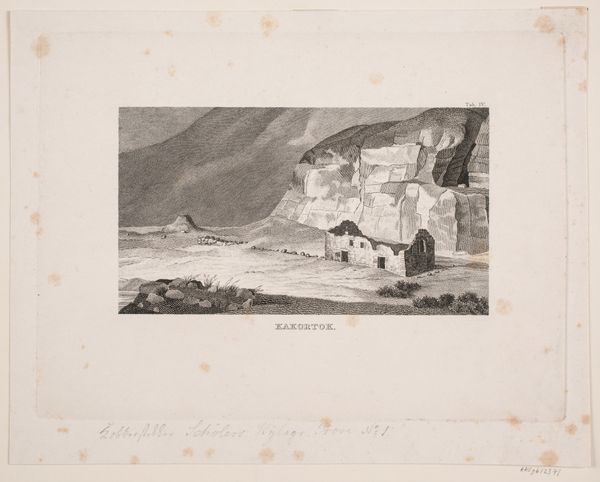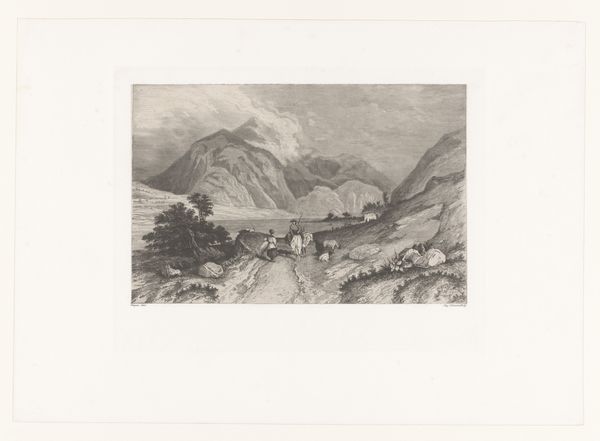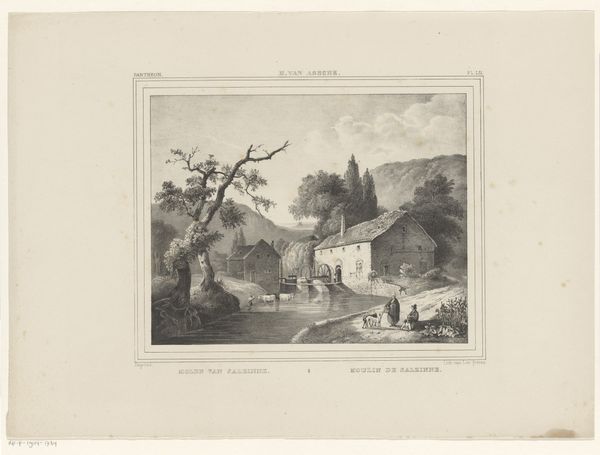
drawing, print, engraving
#
drawing
# print
#
landscape
#
romanticism
#
line
#
cityscape
#
engraving
#
realism
Dimensions: height 360 mm, width 547 mm
Copyright: Rijks Museum: Open Domain
This print, ‘View of the Entrance to the Village of Eaux-Chaudes’ by Louis-Julien Jacottet, is made using a technique called lithography. This process involves drawing with a greasy crayon onto a flat stone, treating it with chemicals, and then printing from the stone's surface. Lithography allowed for the relatively quick and inexpensive reproduction of images, feeding a growing demand for visual representations of places both familiar and exotic. The print captures a specific location in the Pyrenees, but it also speaks to broader social and economic forces. The depicted village, nestled within a dramatic landscape, hints at the relationship between human settlement and the natural world. The artist's hand, guided by the demands of the printing process, captures the textures and forms of the village. By focusing on the materiality and making of this print, we gain a deeper appreciation for its historical context, moving beyond the simple image to understand the labour and technology involved in its creation.
Comments
No comments
Be the first to comment and join the conversation on the ultimate creative platform.
